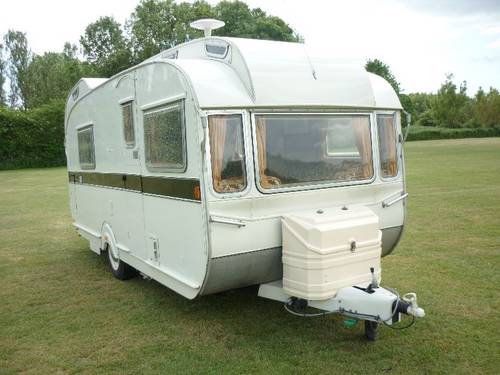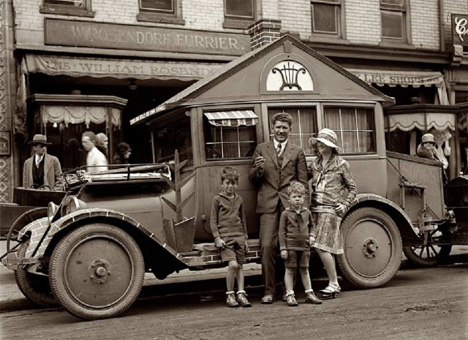Caravan History
1970's
1975 Sprite 400

1978 Stirling
The 1970s was a time of “boom and bust”. The beginning of this new decade saw caravan production reach over 70,000 caravan units, many going for export.
Caravans International (CI) was the UK’s biggest manufacturer producing: Eccles, Fairholme, Europa and Sprite caravans.
The Gailey Group had branches nationwide and had big buying power. They chose to opt out of CI’s brands. Instead they took more of ABI Caravans’ brands, including Elddis in late 1973. Gailey were key in ABI’s decision to enter the entry level caravan market. They did this in late 1972 with the ABI Monza - an instant hit, which took most of Sprites’ marketplace.
CI were trying to stretch caravan design with the new 1971 Europa model range (designed by Tom Karren of Ogle design), using large amounts of plastic moulded panels. The idea was carried out on the Eccles and Fairholme brands the year before. Then Fairholme bit the dust in 1973.
Swift, like Elddis and Ace, found the 1970s to be a time of
expansion with rising demand.
Bonded construction arrived in the 1970s, with one new maker
Monolite having a special press enabling one sheet of aluminum to
be bonded on the Styrofoam sandwich construction - a first for a UK
maker.
Reversing a touring caravan was previously a major job, requiring a person to keep setting the small lever behind the overrun braking system (to stop the overrun brakes coming on). By late 1973, a new system for the B&B chassis - the Sigma coupling, put a stop to manual operation making it fully automated.
By 1973, the permitted speed limit for towing a caravan had increased to 50 mph. In March of that year, VAT was added to both tourers and motorhomes. This, with the oil crisis, saw caravan sales take a dive. Prices rose sharply with inflation. As a result, some touring caravan producers chose to move into holiday home manufacture, whilst others went out of business.
In the typical caravan, gas lights were still fitted. It was only upper market caravan models that came with fridges, heaters and ovens. Legislation was introduced, caravans had to have toughened glass and a rear fog light. Double glazed plastic windows were introduced by Knowsley in 1973 - an innovative feature on a mass market touring range.
The 1970s was the decade that imported caravan manufacturers hit the UK shores. One of these, the relatively new Adria (the then Yugoslav manufacturer) began importing its high spec tourers into Bedford’s UK base IMV in February 1971. 41 years later, they are the longest established importer of caravans to the UK market.
